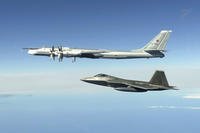The U.S. Army plans to eliminate at least a dozen brigades over the next five years in what was described as the largest restructuring of the force since World War II, the service's top officer said.
The service will reduce the number of brigade combat teams from 45 to 33 as part of a previously announced plan to decrease the active component by 80,000 soldiers, or 14 percent, to 490,000 soldiers by 2017, Army Chief of Staff Gen. Raymond Odierno said Tuesday at a press conference at the Pentagon, as reported by Military.com's Kris Osborn.
And that may be just "the tip of the iceberg," in the words of Rep. Howard "Buck" McKeon, R-Calif., chairman of the House Armed Services Committee.
Due to federal budget cuts, the Army is already considering cutting another brigade, for a total of 13. What's more, the service may have to shed another 100,000 soldiers from the National Guard and Army Reserve if Congress and the White House can't agree on an alternative to automatic cuts known as sequestration. The first installment of across-the-board reductions took effect in March.
"As damaging as they are, these cuts don't begin to reflect the crippling damage sequestration will do to our armed forces and national security," McKeon said in an e-mailed statement after the Army's announcement. "This is only the tip of the iceberg. Much deeper cuts are still to come."
At least 10 stateside installations will lose a brigade, including Fort Bliss, Texas; Fort Bragg, N.C.; Fort Campbell, Ky.; Fort Carson, Colo.; Fort Drum, N.Y.; Fort Hood, Texas; Fort Knox, Ky.; Fort Riley, Kan.; Fort Stewart, Ga., and Joint Base Lewis-McChord, Wash.
Two more based in Germany are being inactivated, one from Baumholder and another from Grafenwoehr.
The Army is also reorganizing the makeup of the brigade combat teams to retain as much combat potential as possible despite the reductions, Odierno said. The service will add a third maneuver battalion – and additional fires and engineering potential to each armor and infantry brigade combat teams to make them more lethal, more flexible and more agile, he said.
The Army will also keep investing in aviation, special operations, missile defense and cyber security, Odierno said.








